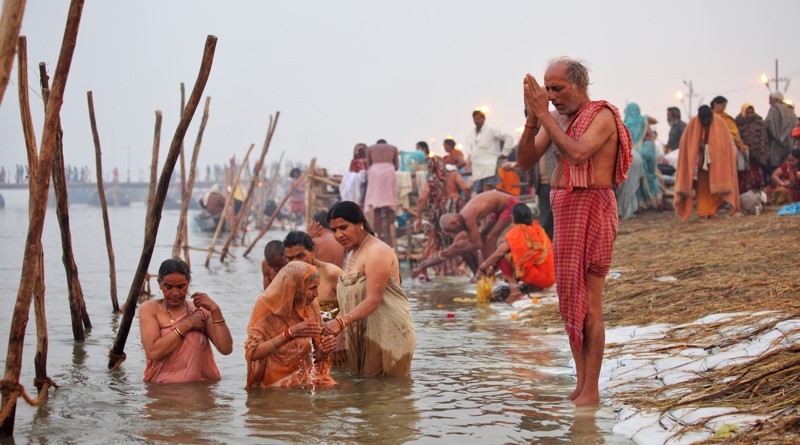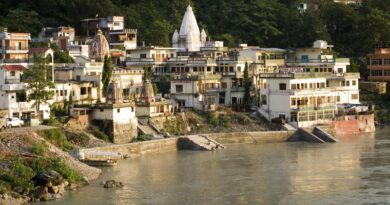Ganga rejuvenation: Centre plans jail time, heavy fine for polluters

The Centre has said over one-third of the Namami Gange projects have already been implemented and made operational and the remaining will be completed by 2022 even as the Parliament’s winter session is expected to see the landmark National River Ganga (Rejuvenation, Protection and Management) Bill, 2019 being introduced.
The bill, prescribes measures to prevent, control and abate pollution in the Ganga and ensure its continuous and adequate flow. It proposes stiff penalties and even imprisonment for polluting the Ganga or obstructing its flow – five years of imprisonment and fines as high as Rs 50 crore.
The Centre has set a deadline to complete all sanctioned works of Namami Gange project by 2022.
So far, a total of 305 projects have been sanctioned at an estimated cost of Rs 28,613.75 crore, out of which 109 projects have been completed and made operational. The rest of the projects are at various stages of implementation, Minister of State for Jal Shakti Rattan Lal Kataria informed the Lok Sabha recently in reply to a question.
Cleaning of rivers is a continuous process. Close monitoring and efforts are being made to complete all the sanctioned projects by March 2022, creating required sewage treatment capacity.
Under Namami Gange programme, diverse set of interventions like pollution abatement activities including sewage, industrial effluent, solid waste, etc, river front management, aviral dhara, rural sanitation, afforestation, biodiversity conservation and public participation have been taken up for cleaning and rejuvenation of Ganga, Kataria told the Lok Sabha.
He said that 97 cities and town have been identified along Ganga that discharge about 2953 million litres per day (MLD) (as per 2016 data) in the river.
“For Ganga stem cities/town, projects have been taken up to create 3308 MLD sewage treatment capacity against the generation of 2953 MLD”, the minister said.
“The sewage treatment capacity in Ganga main stem towns have now increased from 1305 MLD (in 2014) to 1954 MLD, excluding 410 MLD sewage treatment through East Kolkata Wetland,” he added.
Union Jal Shakti Minister Gajendra Singh Shekhawat told the Lok Sabha that there has also been an improvement in the quality of water of Ganga.
“Due to various pollution abatement initiatives taken by the Government under the Namami Gange programme, the water quality assessment of River Ganga in 2019 has shown improved water quality trends as compared to 2014,” he said.
Dissolved oxygen levels have improved at 32 locations, biological oxygen demand (BOD) levels and faecal coliforms have improved at 39 and 18 locations, he said.
During last three years, 379 MLD new sewage treatment capacity has been added, of which 169 MLD has been achieved during last one year. The present sewage treatment capacity is 1954 MLD, said Shekhawat.
The Centre is also working to bring an area of 1,34,106 hectares under plantation in the five Ganga states – Uttarakhand, Uttar Pradesh, Bihar, Jharkhand and West Bengal by December 2020, based on a detailed progress report (DPR) prepared by Forest Research Institute (FRI), Dehradun,
The DPR prescribed 43 numbers of models under four major heads namely natural landscape, agricultural landscape, urban landscape and conservation intervention. Since the launch of Namami Gange programme, an area of 30,761 hectares has been planted or is being planted during the period 2016-20.
Meanwhile, the Narendra Modi Government is expected to table as many as 22 bills during Parliament’s winter session, including one that seeks a way to end the many river disputes between states and aims for building safety of dams, besides the one to protect the Ganga River.
The Government is set to introduce the landmark National River Ganga (Rejuvenation, Protection and Management) Bill, 2019. The bill has proposed not only stiff penalties and imprisonment, but proposes such offences to be non-bailable and cognizable.
It also seeks to have a mechanism to crack down against illegal jetties and port built on the river’s shores, diversion of its water, illegal mining, stone quarrying and illicit extraction of groundwater from the river belt.
The bill also proposes hefty penalties for spoiling or defacing the ghats along the Ganga and its tributaries. There is also a provision for setting up Ganga Protection Corps, which will be provided by Union Home Affairs Ministry. The Corps will have power to arrest any person found violating the provisions of the Act and produce the person before the local police station.
The Dam Safety Bill, 2019, also expected to be tabled during the winter session, seeks to manage the country’s dams in a better fashion. The bill comes in the wake of floods causing havoc in many parts of the country. The bill provides for the surveillance, inspection, operation and maintenance of specified dams across the country.
It was introduced in the Lok Sabha in July and passed in August. Similarly, a bill on resolving inter-state water disputes too had been passed in Lok Sabha in July this year.
The Inter-State River Water Disputes (Amendment) Bill, 2019 provides for a permanent tribunal with multiple benches and a Dispute Resolution Committee for adjudication of inter-state river water disputes.



